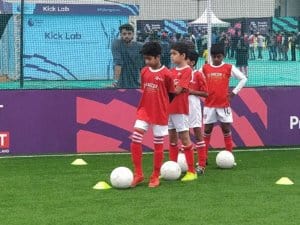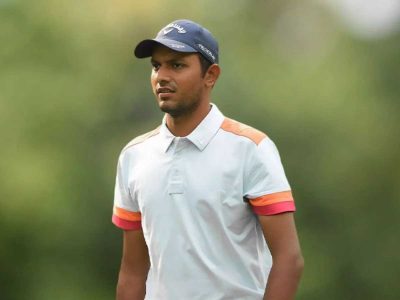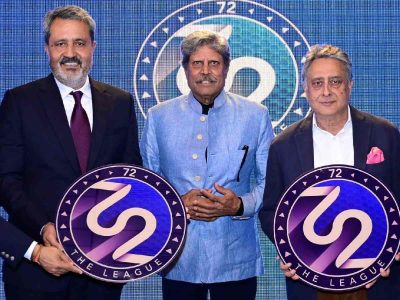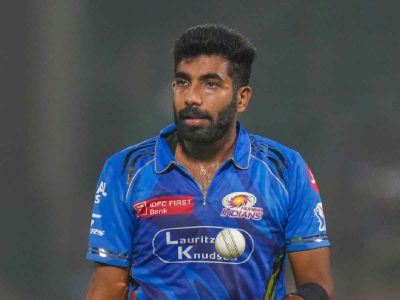With European giants like Arsenal and Barcelona setting up academies in the country, the Indian football scene hopes to improve with state-of-the-art for young footballers
Sepp Blatter, former FIFA president, said on his visit to the country that India is a sleeping giant of the footballing world. With the advent of the ISL and the success of the under-17 World Cup last year, India is indeed making strides in the world of football. Fans from around the country now hope that India will some day qualify for the World Cup.
However, to realise that dream, what is needed is improvement of training at the grassroots level, so that India can produce quality players for the future. “India needs international level academies so that football can be improved at the grassroots level, and that is a major area where we are lacking,” says Anadi Barua, the coach of the Indian National Women’s Football team, who says that India is one of the fastest growing nations in the sport.
To tap into the potential that India possesses, football clubs from across the world like Barcelona, Arsenal, Paris St. Germain and Manchester United have now set up academies all over the country to nurture homegrown talent.
FCBescola, the academy of Spanish giants Barcelona, is the first such academy set up by a European club in India. The five-time UEFA Champions League winners set up their school in Sector 62, Gurgaon in association with a local NGO, Conscient Football in 2011.
“Our aim was to improve football at the very basic grassroots level; we were looking to set up an academy, and wanted a big name to be associated with us, and hence contacted various European clubs. Barcelona too were looking to set up an academy here and that’s how it was set up,” says Dhruv Arora, head of FCBescola.
Started in 2011 with only one centre in Gurgaon, FCBescola has now set up 10 academies across the country, with four more in Delhi NCR at Saket, Vasnt Kunj, Dwarka and Noida.
“For any player to join FCBescola, he would have to first give a trial at any of our centres, where the technical director from FCB will assess the child’s performance and recommend an appropriate programme for the player according to his skill and age,” says Arora. Programs and prices vary, starting from R500 per session. The academy also conducts trials for coaches, so that they can select the best teachers to train their young talent.

The technical director of the academy, Aitor Olmo Ibanez, has been directly sent from FC Barcelona, and he looks over the programs and operations. “We ensure that our players get the best training, and it is no different from the training that players like Messi or Iniesta get at our parent club”, says Ibanez.
“Barcelona is renowned for their youth structure, with the La Masia academy producing players like Xavi, Messi, Pique and Iniesta among others. So, the experience of the club in producing world class talent from the grassroot level will certainly help the basic footballing structure of India,” says Ibanez.
“With each passing day, the interest in the academy is growing. We have engaged more than 25,000 young footballers in our programs since inception. It not only grows the interest of youth in football but also provides a platform for young footballers to hone their craft. Many of our players play football for their school teams, districts, state level, national level and have even represented India,” says Arora.
English Premier League giants Arsenal too, in 2013, set up their academy, Arsenal Soccer School in Delhi in 2013, in association with sports NGO ‘India on Track’ in Vasant Kunj. “Our aim was to provide the best training at grassroot level, so when Arsenal joined hands with us we knew that our students will be in good hands,” says Piyush Sachdeva, assistant marketing manager at the school.
“Arsenal Soccer Schools trains students aged 5 to 18 years. Students are trained by licensed coaches who follow a global curriculum which is provided by Arsenal Soccer Schools. Our training sessions focus on the development of technical skills as well as tactical awareness and are divided into warm-up, technical drills, and match time”, says Sachdeva.
Currently, Arsenal has over 15 schools all across India in Delhi, Mumbai, Bangalore and Amritsar, as they partner with different schools and use their grounds for training.
“The academy runs two different kinds of programme: an in-school training programme and an after-school training programme. The in-school programme focuses on training students from our partner schools during school hours. We have a team of dedicated coaches stationed at the partner school and follow a curriculum depending on the skill level of the students. The after-school programme are open to all students in the age-group 5–8 years, divided into different batches based on their age,” says Sachdeva.
Sachdeva also adds that club officials come from London come to the academies for regular inspection and their technical team conducts regular practice sessions for the Indian technical team so that they can improve on a regular basis and impart the best training to the students.
“These European clubs setting up their academies in India is a great sign and it will encourage young footballers to take up the sport so that they can be associated with these big clubs,” says Anadi Barua.
However, according to Aitor Olmo Ibanez, India still has a long way to go before it can achieve something great in international football. “The quality of players that we train in India are nowhere near to the kids in Europe, and it is quite natural, since football is not the main sport of the country. You could see the difference when India played in the Under-17 world cup, where they were completely outmatched by the other countries”, he says. “That is why the expertise of these foreign clubs is needed — so that we can improve football at the grassroots level.
“Give me 10 years, and I guarantee you that football will increase leaps and bounds in this country with the involvement of European clubs like Barcelona,” he concludes.





